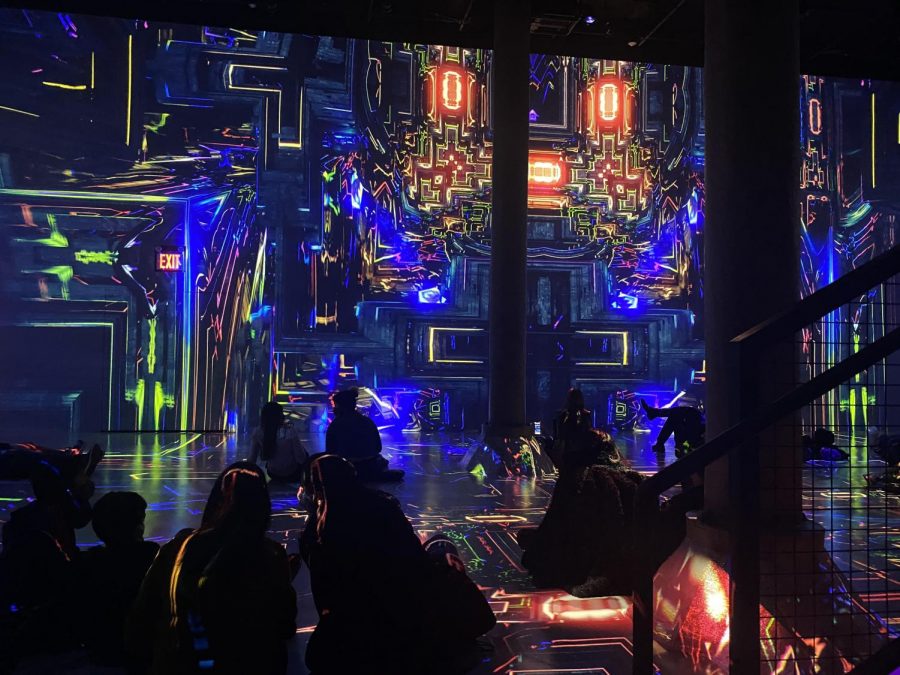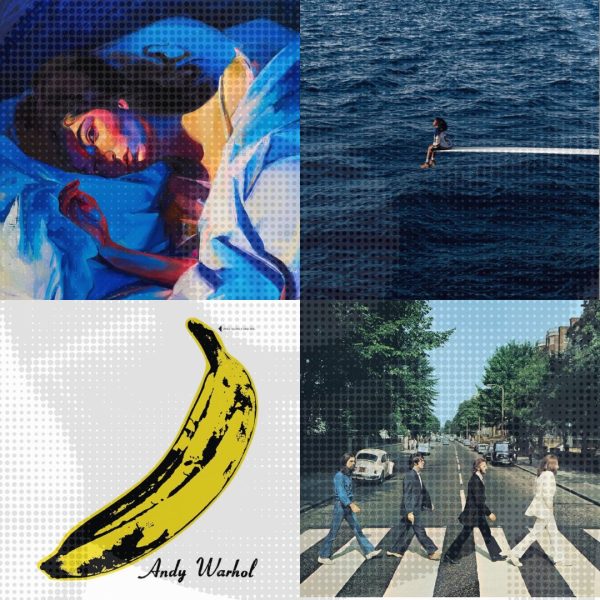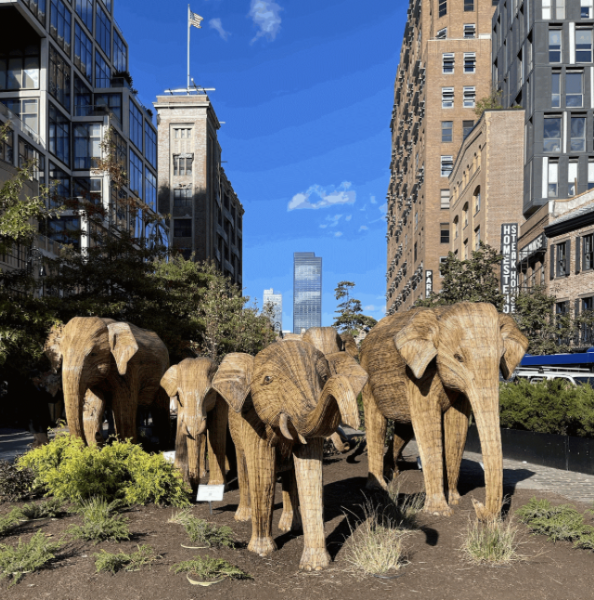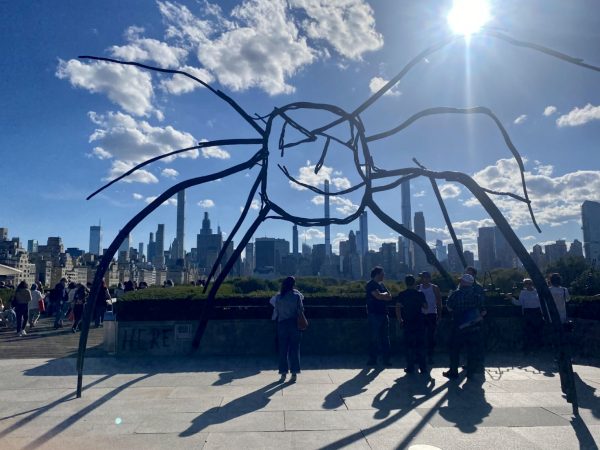The Digital World of “Artechouse”
You’ve probably seen the psychedelic, projected colors on your Instagram feed or your TikTok For You Page. New York City exhibitions peaked right before the pandemic hit, with photos and videos from a variety of trendy pop-ups appearing everywhere. Recently, I had the opportunity to go to “Artechouse,” an innovative digital art exhibition in Chelsea. In a thirty-minute performance, Julius Horsthuis has created an endearing environment that positions the audience within an exhibition of light movement. Through the use of projectors broadcasting on the four surrounding walls and the floor, the light show creates the illusion of pure containment within the dimensions of mathematics, nature and architecture.
The space felt empty when I first entered the exhibit. Rounding the corner, I discovered about ten other visitors crowded in the back. I soon discovered that this was the best seat in the house. Similar to the movie theater experience I’ve mourned for the past year, I was able to try out different spots around the exhibit to see how the experience differed. Unlike a movie theater, though, there wasn’t a bad spot. Each location I tried out engaged me differently with the art. Sitting in the back gave the full experience with the vibrant colors transitioning from one scene to the next. Sitting in the front eliminated any predictability of which scene would come next. The display of colors traveled right in front of me, flooding from the walls and sinking through the floor.
Horsthuis’s work induced a hallucinogenic experience, somewhat comparable to a Beach House music video. The scenes felt familiar to video games like Breath of the Wild or Hollow Knight. They mimicked a movie that felt familiar yet had no sense of direction. All can appreciate “Artechouse” for the inclusion of science as a means of artistic expression. The fractals organized by Horsthuis create an artistic narrative that merges mathematical patterns into their own storylines. I grew to appreciate these fractals as they coincided with beautiful colors and compulsive music. As Horsthuis says, this installation creates his “ideal future, one that returns to the intersection of nature and math as our source of inspiration.”
Though “Artechouse” came to NYC in 2019, the exhibit faced challenges as all digital art installations did within the pandemic. As we edge towards a post-pandemic society, the Chelsea exhibit operates with a newfound intent and motivation. Horsthuis writes, “In a time where disease and division characterize our daily reality, I want to show a different existence. An eternal reality of healing and harmony.” The exhibition felt otherworldly. The hour-long period, confined to a room of dancing light, displaced us from our current reality. It was similar to a live performance or movie experience, joining together with strangers to enjoy an hour away from their lives. In a time of isolation, this art surrounds its viewers, bringing them the comfort and wonder they so desperately need after nearly a year without it.
In recent years, it seems the traditional art galleries that populated Chelsea have transitioned to provide faster-paced, audience-engaging work. As our world transitions to a technical society, even art is finding ways to engage us through a similar experience that keeps us tethered to our phones and computers. Combining art and technology draws in the addictive elements of the screen, which fully surround our sight while failing to provide any concrete information through the light arrangements. I appreciate that despite being framed through technology, the exhibit engages the audience to think creatively, yet mindlessly.
Through the use of 17 projectors, Artechouse generates the real-life kaleidoscope we had as kids. Inside this kaleidoscope, the motion of the lights brings a physical motion to the art that transports the viewer into a flood of transitioning scenes. Complementing the light design is a powerful audio element. Not only was the viewer discouraged from drawing their attention away from the art, they were simply unable to. While it was easy enough to photograph or record your experience, it felt unnecessary, and there was a consensus to appreciate the art while it existed. Despite being a digital art gallery, I felt completely disconnected from my own technology and transported to the dystopian world I imagined only in dreams.












































































































































































































